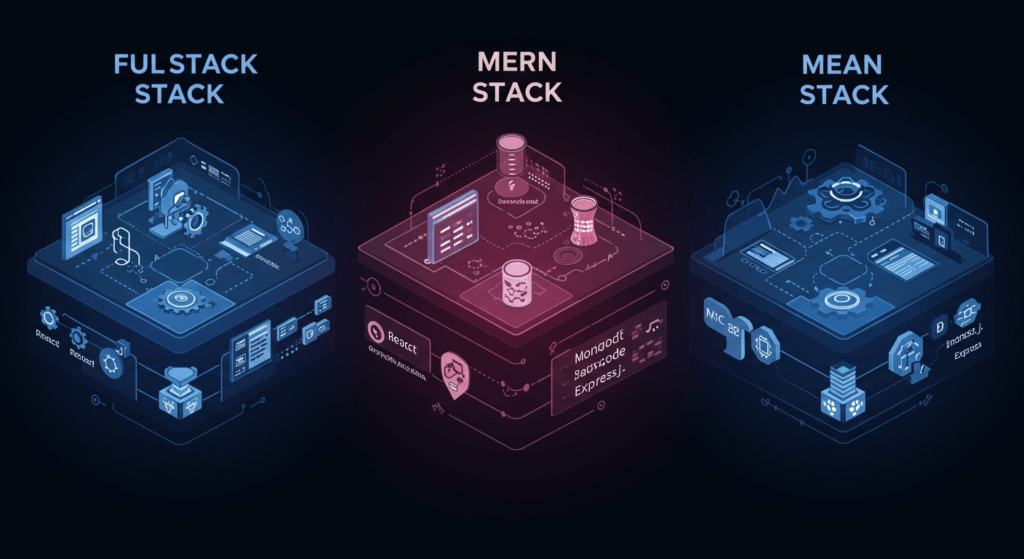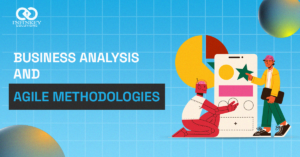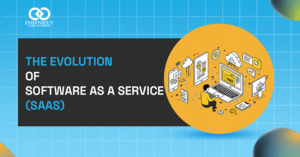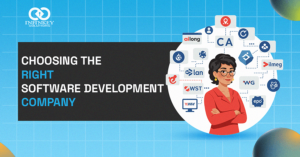Full Stack vs MERN Stack vs MEAN Stack
The process of creating a website is known as web development. A website contains three ends:
- Client-side
- Server
- Database
The technologies in charge of creating a web application’s ends are MEAN and MERN.

Stack! A confusing word, right? Developers need to be well-informed about stack features, cost-effectiveness, and other associated advantages to select the best choice.
There are three types: Technology Stack and Application Stack.
A technology stack refers to the combination of programming languages, frameworks, libraries, and tools used to build and run software applications, such as front-end, back-end, databases, and servers.
An application stack refers to the collection of software programs and components working together to perform specific functions for a user or a system, including databases, middleware, and software applications that work in unison.
To put it briefly, stack technology includes appropriate programming languages, frameworks, tools, libraries, patterns, and software for UI/UX solutions. With a solid grasp of the foundational concepts of stack technology, we can now delve deeper into the realm of Full Stack Development, where developers work on both the front-end and back-end of web applications.
Full Stack Development:
While MERN and MEAN are particular technological stacks used for full stack development, full stack development is the process of working on both the front-end and back-end of web applications. While MERN and MEAN are specific frameworks within the full stack category that leverage JavaScript and other technologies for web application development, full stack development basically covers a wider range of technologies and techniques.

As you explore the nuances of these stacks, it becomes clear that understanding their components is essential for making an informed decision
Pros and Cons:
Cons:
- Combining both front-end and back-end makes managing changes in a large application challenging.
- Scaling can be tricky with full-stack development.
- Hiring a single developer for both front-end and back-end can increase costs by 40-50% compared to having separate developers.
Pros:
- Full-stack development allows you to work on both the front-end and back-end simultaneously, saving time.
- Developers can reuse code from previous projects, enhancing efficiency.
- This approach is highly optimized for performance.
This understanding leads us to consider the broader implications of choosing the right stack, particularly in the context of your project’s specific goals and audience.
With this knowledge in hand, you can better navigate the complexities of Full Stack, MEAN, and MERN development.
MERN Stack:
Mern stack stands for Mongo DB, Express JS, React JS, and Node JS.
The first is MongoDB, a NoSQL database that uses a flexible, document-like format to store data. Next up is Express.js, a web framework that greatly simplifies the process of developing server-side applications using Node.js. The front end is built with React.js, which enables you to design dynamic and interactive user interfaces. Lastly, JavaScript can now operate on the server side thanks to Node.js, allowing full-stack development with simply JavaScript!

Advantages of MERN Stack:
- Using JavaScript for both front-end and back-end makes development easier and helps team collaboration.
- React’s component system and Node.js’s non-blocking design speed up the development process.
- MongoDB is scalable and can handle large amounts of data and users.
- js is great for single-page applications, offering a fast and smooth user experience.
- A large community around the MERN stack provides plenty of resources and support for developers.
MEAN Stack:
Mean stack stands for Mongo DB, Express JS, Angular, and Node JS.
The first is MongoDB, a NoSQL database that uses a flexible structure similar to JSON to store data. Angular, a potent front-end framework that makes it possible to create dynamic single-page applications, comes next. Express.js comes next, making it easier to create server-side apps and APIs using Node.js. Lastly, full-stack development with a single language for the complete application is made possible by Node.js, which enables developers to run JavaScript on the server side.

Advantages of MEAN Stack:
- The MEAN stack uses JavaScript for both front-end and back-end, simplifying development.
- Angular enables the creation of dynamic single-page applications with real-time updates.
- js offers high performance with fast, non-blocking I/O operations.
- MongoDB’s flexible structure allows for easy data management and scalability.
- The stack is open-source, providing strong community support and resources.
MERN VS MEAN: Key Differences:
The key difference between the MERN stack and the MEAN stack lies in the front-end framework used: MERN employs React, while MEAN uses Angular. React is a JavaScript library focusing solely on the view component, offering flexibility and faster performance through its virtual DOM. In contrast, Angular is a full-featured framework with a complex API, following the model-view-controller (MVC) pattern, and provides a more structured environment.
Technology: MERN includes MongoDB, Express, React, and Node.js; MEAN consists of MongoDB, Express, Angular, and Node.js.
Language: MEAN utilizes TypeScript, while MERN uses JavaScript and JSX.
Productivity: MEAN tends to offer better productivity, while MERN may have lower productivity.
Learning Curve: MEAN has a steeper learning curve compared to MERN, which has better documentation.
Data Flow: MEAN features bidirectional data flow, while MERN has a unidirectional flow.
Selecting the right tech stack for your web project is crucial, and when deciding between MEAN and MERN, there are several key factors to consider:
Choosing the Right Stack (MEAN vs MERN):
Both stacks offer unique strengths, so there is no one-size-fits-all solution. MEAN, which utilizes Angular, excels in cost-efficiency and security, while MERN, built on React, offers flexibility and high performance. The best choice depends on your project’s specific requirements, such as scale, complexity, budget, and your team’s familiarity with the technologies.
Thus, the focus shifts to evaluating the practical factors that can influence your choice, such as development costs, scalability, and the expertise of your team.
Factors to Consider:
Development Cost: MEAN is generally more expensive due to Agular’s complexity, while MERN, leveraging React, tends to be less costly to implement.
Project Requirements: MERN is ideal for real-time applications due to its use of Socket.io. In contrast, MEAN is better suited for conventional web applications.
Scalability & Flexibility: Both stacks are scalable, but MERN is considered more flexible, effectively handling server-side and client-side rendering tasks.
Developer Expertise: Evaluate your team’s skill set. If your developers are more familiar with Angular, MEAN may be preferable. Conversely, if they have experience with React, MERN is the better choice.
New Practices: Consider the stability of the technology. MEAN has a more established ecosystem, while MERN is a newer technology that evolves rapidly.
Choosing the Right Stack:
Define Your Goals: Identify the type of application you’re developing and your business objectives to narrow down your options.
Consider Your Audience: Understand who your users are and their preferences to select a stack that provides the best user experience.
Research Stacks: Investigate the strengths and weaknesses of both MEAN and MERN, along with other options like LAMP and Django.
Make a Decision: Compare each stack against your project requirements, including cost, scalability, and team expertise.
Experiment: Test the selected tech stack by creating a Minimum Viable Product (MVP) to evaluate its performance and make necessary adjustments based on user feedback.
Ultimately, the best choice between MEAN and MERN aligns with your project’s unique goals and requirements. With careful consideration and possibly expert guidance, you can navigate these options successfully.
Conclusion:
In summary, selecting between the Full Stack, MEAN, and MERN stacks hinges on your specific project needs. Each stack has its unique strengths: Full Stack offers a broad approach, MEAN excels in security and cost-effectiveness, and MERN provides unmatched flexibility and performance. The key is to evaluate your project’s requirements, your team’s expertise, and the long-term goals you aim to achieve. By conducting thorough research and possibly seeking expert insights, you can confidently choose the stack that will set your web development project on the path to success.






